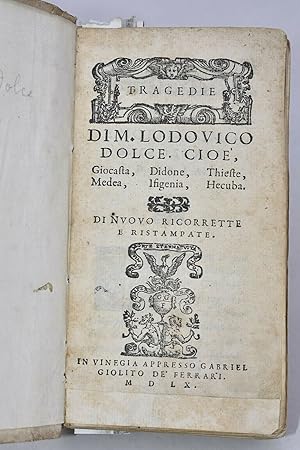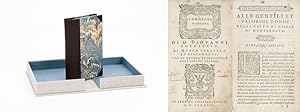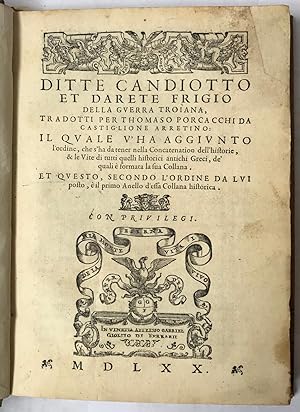gabriele giolito (91 risultati)
Tipo di articolo
- Tutti gli articoli
- Libri (84)
- Riviste e Giornali
- Fumetti
- Spartiti
- Arte, Stampe e Poster (7)
- Fotografie
- Mappe
-
Manoscritti e
Collezionismo cartaceo
Condizioni
Legatura
Ulteriori caratteristiche
- Prima edizione (9)
- Copia autografata
- Sovraccoperta (4)
- Con foto (74)
- No print on demand (83)
Spedizione gratuita
Paese del venditore
Valutazione venditore
-
La prima [- seconda] parte delle Vite. nuouamente da M. Lodouico Domenichi tradotte. Con due tauole, le quali sono poste nel fine della seconda parte.
Editore: Venice Gabriele Giolito de' Ferrari and Brothers 1555, 1555
Two volumes, 4° (256x168 mm). I. Collation: *4, A-Z8, AA-ZZ8, AAA-PPP8. [8], 973, [3] pages. Roman and italic type. Woodcut printer's device on the recto of fol. PPP8. II. Two parts. Collation: †4, a-z8, aa-kk8, ll4; aaa-fff8, ggg4. [8], 535, [1]; [104] pages. Roman and italic type. Woodcut printer's device on both title-pages, and a smaller version at the end of each part. Woodcut animated initials, and headpieces. Handsome Venetian bindings, executed around 1555 by Anthon Lodewijk. Gilt-tooled red morocco, over pasteboards. Gilt and blind fillet borders. Central medallion with radiating tongues-of-flame within lobed panel, the two volumes slightly differently tooled with solid outline and azure tools. The central medallion of the first volume overstamped with forged Apollo and Pegasus plaquette. Spines with five double raised bands, decorated with one, and outlined with two gilt fillets. Compartments gilt, open circle border at the head and foot of the spines. Edges of the boards decorated with a double vertical line in blind. Edges gilt and gauffered with double dotted-line frame. Missing four ties, probably in red silk. Vol. 1 with minor repairs to the corners, rebacked preserving most of the original backstrip, some gilding renewed. Skilful repairs to the corners and joint of vol. 2, a little worming in flyleaves. In modern cloth solander cases, in brown for vol. 1 (on the spine 'PLUTARCHIS VENEZIA 1555 CANEVARI'), and in green for vol. 2 ('PLUTARCHA [SIC] LA SECONDA PARTE DELLE VITE, VENETIAN BINDING VENICE 1555'). A fine copy, some spotting. Minor ink stain in the first volume, a few leaves uniformly browned. On the recto of the front flyleaf of the first volume, the inked note 'Reliure Canevari Iere moitié du XVime S. Genes'.Provenance: Pietro Benincasa (ownership inscription on the title-pages 'Pietro Benincasa', partly removed from the first volume); Curtio Bertini, from Colle val d'Elsa (sixteenth-century ownership inscriptions on the title-pages, 'Di Curtio Bertini' and 'Di Curtio Bertini da Colle' partly removed from the first volume). By the early twentieth century the two volumes became separated: Vol. 1: the bookseller in Florence Tammaro De Marinis (1878-1969), 1911; early twentieth-century ex-libris engraved by Stern on the front pastedown, eradicated; Cartier library (sale Sotheby's Monaco, 28 November 1979, lot 1366); GDV (monogram blindstamp on the title-page); Rossignol (sale Paris, Valleriaux expert, 27 February 2003, lot 557); Michel Wittock (see The Michel Wittock Collection. Part I: Important Renaissance Bookbindings, Christie's London 2004, no. 97). Vol. 2: Baron de Sant'Anna (sale Brussels 16 May 1925, lot 105); Michel Wittock (ex-libris on the front pastedown; see The Michel Wittock Collection. Part i: Important Renaissance Bookbindings, Christie's London 2004, no. 97). A remarkable copy, in its original Venetian binding, of the first edition of Domenichi's Italian translation of the Vitae by the Greek historian Plutarch. The two volumes have only recently been reunited after a century's separation; they were bound around 1555 by the famous Flemish craftsman Anthon Lodewijk or Lowies, who was active in Venice between 1553 and 1557. Anthon Lodewijk "seems to have arrived in Venice not later than 1553. In his mature work he imitated the style of the 'Mendoza Binder' or the 'Fugger Binder', but using his own kit of Italian tools. These are found in presentation copies of books printed by Giolito in 1554, 1556 and 1557, for his distinguished clientele, which included among others Jakob Fugger and Antoine Perrenot de Granvelle. Lodewijk probably left Venice soon afterwards and is next found in Augsburg binding Greek manuscripts and printed books for Johann Jakob Fugger and decorating them with the Italian tools brought from Venice" (Hobson-Culot, Italian and French 16th-Century Bookbindings, p. 43). These volumes demonstrate his more mature, elaborate Venetian style; in all likelihood the binding. Book.
-
La prima [- seconda] parte delle Vite di Plutarco Tradotte da M. Lodovico Domenichi. Con gli suoi Sommarii posti dinanzi a ciascuna Vita.
Editore: Venice Gabriele Giolito de' Ferrari 1560, 1560
Two volumes, 4° (225x161 mm). I. Collation: *4, A-Z8, AA-ZZ8, AAA-PPP8. [8], 937, [3] pages; II. Two parts, each with separate title-page. Collation: †4, a-z8, aa-kk8, ll4; aaa-eee8, fff10 (fol. fff5 signed 'ggg'). [8], 535; [101] pages. Roman and italic type. Woodcut printer's device on title-page of both volumes, on the recto of fol. PPP8, on the title-page of the Tabulae (fols. aaa1r), and on the verso of fol. fff10. Nearly contemporary uniform Roman binding, brown morocco over pasteboards. Covers within blind fillets and narrow gilt roll, at the outer corners the Cesi 'seven hills'. At the centre small floral tools and fleuron in gilt. On the upper cover of the first volume the gilt inscription in a cartouche '.VITE. DI. PLUTARCA. I. PARTE'; on the upper cover of the second one "".VITE. DI. PLUTARCA. 2. PARTE', likewise in gilt lettering. Spines with seven raised bands, underlined with gilt fillets, rebacked; title and volume numbering in gold. Original, handsome gauffered and painted edges, the fore-edge showing the Cesi coat of arms, a tree above seven hills. Good copies, foxing in places, trace of old stamps, now illegible, on both title-pages.Provenance: from the library of the Cesi family (armorial binding). A magnificently bound copy of the Italian edition of Plutarch's Vitae, translated for the Venetian printer Giolito by his collaborator, the polymath Lodovico Domenichi (1515-1564). The two-volume publication is a substantial re-issue – introduced with a newly recomposed title-page bearing the printing date '1560' – of the first edition, which had appeared in 1555 (see no. 118). As their fine armorial binding stamped with the seven-hills coat of arms attests, the volumes presented here were once preserved in the library assembled by the aristocratic Cesi family which was highly connected in Rome and the Papal States. The most outstanding member of this family was undoubtedly the naturalist, scientist, and Duke of Acquasparta, Federico Cesi (1585-1630), founder of the Accademia dei Lincei (Lincean Academy) in 1603, and one of the most influential patrons of Galileo Galilei. The entry relating to a copy of the Giolitine Plutarch of 1560 is included in the inventory of Federico's books located at Acquasparta, the Cesi palace, listing also volumes owned by other members of the family, which never entered the Lincean Academy. The inventory Libri diuersi dell'Heredita sudetta, held in the Academy Archives (ms Archivio Linceo XXXII) was compiled between February and April 1631, in order to divide the inheritance among Frederico's heirs – his second wife, Isabella Salviati, sister of the mathematician Francesco Salviati, and his brother, Giovanni Federico Cesi. Plutarch's Lives is listed among the volumes put in a case filled with moral and historical books ("Cassa N, Morali et Historici'): "P.a parte delle vite di Plutarco tradotte da Lod.co Domen[i]chi con li suoi Sommarij con la dichiarat.ne dei paesi [pesi] in Venetia 1660. [i.e. 1560] del Giolito".STC Italian 528 (describing a slightly different issue); M. T. Biagetti, La Biblioteca di Federico Cesi, Roma 2008, p. 172, no. 748; Eadem, "Dispersed Collections of Scientific Books. The Case of the Private Library of Federico Cesi (1685-1630)", F. Bruni - A. Pettegree (eds.), Lost Books. Reconstructing the Print World of Pre-Industrial Europe, Leiden-Boston 2016, pp. 386-399; Philobiblon, One Thousand Years of Bibliophily, no. 125. Book.
-
Trattato del giuoco della Palla
Editore: Gabriele Giolito de'Ferrari and brothers,, 1555
Da: Arader Galleries - AraderNYC, New York, NY, U.S.A.
Prima edizione
Hardcover. Condizione: Fine. 1st Edition. 3 parts in one, 8o (141 x 94 mm). 6 double-page woodcut engravings of equipment and court plans inserted in signatures K and L with starred page numbers, text on the verso of the illustrations continuing the text of the regular signatures, woodcut grotesque and historiated initials, printer's device on title, larger version on verso of colophon leaf, V8 blank (a few plates slightly cropped at edges). (Some occasional pale spotting, a few leaves cropped close at headlines.) Fine modern calf binding to a 16th-century style, spine gilt, by Trevor Lloyd. FIRST EDITION OF THE THE FIRST BOOK ON THE GAME OF TENNIS, dedicated to Alfonso d'Este (1535-95), last Duke of Ferrara, grandson on his mother's side of Louis XII of France, and on his father's side of Lucrezia Borgia. Scaino, a priest and theologian, was apparently prompted to write his book after a dispute arose during a game of court tennis. In it he establishes rules and a scoring system for the game, sets the standard court sizes, and mentions some principles of etiquette to be practiced between players. It also covers many forms of tennis, his definition of "ball-game" in W.W. Kershaw's English translation (London, 1951) being: "a contest between at least two players who, placed one on one side and the other on the other as adversaries, do battle together with a solid and round instrument made from the skin of an animal and capable of bouncing, called a ball, each doing his utmost to obtain victory for himself by striking the ball as far as possible towards his adversary, striking it sometimes at the volley in mid-air, sometimes after the first bound, and sometimes at the half-volley ." (ch. iii, pt. II). The key differences in the varieties of the game depend on whether it is played with a solid or air-filled ball, with the open hand or a clenched first, with the fist without an instrument or with the fist with an instrument, and in the open or with a cord (ch v, pt. II). Two chapters in part II (xvi and xvii) describe the larger and smaller court for the cord game with the racket and are followed by two chapters (xviii and xix) on the closed and open court for the cord game with the hand. Scaino admits to being a player of "il guioco della corda", the closest equivalent to present day real tennis and lawn tennis, describing it (ch. xx) as "the rarest and most valued" form of ball-game because it is confined to a limited space, making it less subject to chance as well as requiring a greater degree of art and skill. Tennis historians have all emphasized the enormous value of Scaino's book, serving as an accurate foundation for the history of the sport. Adams II, S-547; Brunet V, 178, Supplement II, 606; Mortimer/Harvard Italian 465; Garnett p. 288; Henderson p. 176.
-
Two parts in one volume, 4° (215x149 mm). Printed on blue paper. Collation: A-Z8, AA-KK8; *8,**8, ***8, ****6. 264; [30] leaves. The second part bearing on its separate title-page the imprint date '1547'. Roman and italic type, the cantos printed in two columns. The first title-page within an elaborate architectural border containing Giolito's phoenix device; imprint set in type in a cartouche in the lower part of the border; in the second part different printer's devices on the title-page, and at the end. Medallion portrait of Ariosto on fol. *8v. Forty-six woodcuts (ca. 47x87 mm), one at the beginning of each canto. The argumenti within a woodcut border. Woodcut historiated initials in two different sizes. Seventeenth-century Italian limp vellum, gilt tooled (probably a remboîtage). Covers framed within double fillets, small floral tool at each inner corner. At the centre, large gilt coat of arms of an unidentified bishop. Traces of ties. Spine with three raised bands, emphasized by gilt fillets. On the first and last compartments the early inked shelfmark 'K V 2'. A good copy, light foxing. A few spots on the title-page, the verso of the last leaf somewhat soiled. Fols. A4v and A5r lightly discoloured. Wormholes repaired to the lower margin of the last quires. Minor loss to the outer upper corner of fol. HH2. Small early ink stains, the upper margin of some leaves lightly trimmed. A few early marginal annotations and reading marks.Provenance: early seventeenth-century ownership inscriptions on the verso of fol. *2, 'Jo. Pompilio mano propria', repeated twice, and 'Io Domenico [?]'. The rare Giolito 1546 quarto edition of Orlando, in an extraordinary copy printed on blue paper: one of the finest illustrated books produced in the Italian Cinquecento. Gabriele Giolito de' Ferrari printed his first Furioso in 1542, a publication which goes far beyond previous editions by other printers: for the first time the text of the poem is supplemented with commentary, and each canto is introduced by a woodcut vignette, as well as an argomento. The success of this innovative publication was immediate and unprecedented, and the Furioso became the 'symbol' of the printing house itself. From 1542 onwards the poem was constantly re-issued, both in quarto and, as of 1543, in the cheaper and more popular octavo format, thus proclaiming Giolito's success as a printer and businessman, and transforming the Furioso into a 'classic' of modern literature. The 1546 edition opens – like that of 1542 – with Giolito's dedicatory epistle to Henri II de Valois, then Dauphin de France, who had married Catherine de' Medici in 1533. The text was edited by the Venetian Lodovico Dolce (1508-1568), one of the closest collaborators of the Venetian house, and was additionally supplemented by his Espositione di tutti i vocaboli et luoghi difficili, che nel Libro si trovano, which soon became the most frequently reprinted commentary to the Furioso. Furthermore, in the edition of 1546, Giolito includes – in response to the Cinque Canti first published in 1545 by the rival Aldine printing house – his 'novelty', i.e., eighty-four stanzas dealing with the history of Italy, which he had in turn obtained from Ariosto's son Virginio. Another remarkable aspect of the Giolito Furioso is the illustrative apparatus that accompanied the cantos: forty-six woodcuts comprising a cycle whose stylistic quality, refined design, and abundance of detail represents a significant step in the illustration of the poem. Each vignette shows multiple scenes pertaining to the canto at hand, thereby visually capturing the multifarious and ever-changing narrative structure of the poem. The various episodes diminish in size in the receding planes of the woodcut, and are thus conceived as separate but simultaneous actions: the majority of the vignettes depict two or three scenes from the related canto, although two woodcuts each include four episodes, and one – the vi. Book.
-
Vita del Prencipe Andrea Doria. Con un compendio della medesima Vita.
Editore: Venice Gabriele Giolito de' Ferrari 1565, 1565
4° (226x160 mm). Printed on blue paper. Collation: *8, **6, A-M8. [28], 188, [4] pages. Complete with the last blank. Roman and italic type. Woodcut printer's devices on the title-page and on the verso of fol. M7. Two engraved full-page portraits depicting Andrea Doria on fols *8v and **1r: the first showing the prince as civic hero and father of the homeland, placed within an elaborate medallion bearing the motto 'VT CIVIS PATRIAE PATER ET LIBERTATIS RESTITVTOR', the second depicting him as a condottiero, within a medallion with the motto: 'VT DVX ET PRINCEPS PRELIORVM VICTOR', and enriched by his coat of arms. Woodcut animated and decorated initials, headpieces. Early eighteenth-century French red morocco; covers framed with a double gilt fillet and narrow dotted frieze. Smooth spine with title in gilt lettering and richly decorated with ramages in gold. A very good, wide-margined copy, small repair to the upper margin of the title-page, a few insignificant spots. On the title-page, a manuscript note written in French with brown ink, attesting to the rarity of the work and the peculiarity of its printing on blue paper, "Ce Livre est rare; C'est un des premiers ouvrages qui ait été imprimé sur du papier bleu. Cette vie est bien ecrite; L'italien est très pur; Ce qui me ferais presque croire que l'ouvrage a été imprimé plus tard que ne le comporte la date 1565". On the recto of the front flyleaf the early shelfmark 'V.2. n° 74'.Provenance: erased ownership inscription on the title-page ('Antonio' ?), preserving only the date '1738'. Rare first edition – presented here in a fine, and possibly unique copy printed on blue paper – of this biography of Andrea Doria (1466-1560), written by his secretary Lorenzo Capelloni. It is the first sixteenth-century biography of the celebrated Genoese nobleman, admiral, and patron of arts. The work is dedicated, on 1 April 1562, by the author to the great-nephew and heir of Andrea Doria, Giovanni Andrea (1539-1600), who had commissioned Capelloni to write the biography. The Venetian Senate granted a fifteen-year privilege for the work, giving Giolito exclusive rights to printing it. A second edition appeared in 1569. Capelloni's Vita del Principe Andrea Doria is also famous for the double illustrations bearing, on facing pages, two engraved profile portraits of Andrea Doria which had an important role in establishing the political iconography of this pivotal Genoese figure. The first portrait shows the prince as a civic hero and father of the homeland and is set within an elaborate medallion with the motto 'VT CIVIS PATRIAE PATER ET LIBERTATIS RESTITVTOR' (fol. *8v); the second portrait depicts him as a condottiero within a medallion bearing the motto "VT DVX ET PRINCEPS PRELIORVM VICTOR', enriched with his coat of arms (fol. **1r). A copy of the work "printed on Carta Grande Azzurra, red morocco" is listed in the Catalogue of Printed Books and Manuscripts sold by London booksellers Payne and Foss in 1837 for the sum of 3 pounds and 3 shillings. Probably this copy.Adams C-587; Bongi Annali, II, 287 ("rara [.] quasi mai s'incontra nei cataloghi"); Philobiblon, One Thousand Years of Bibliophily, no. 135. Book.
-
Gli Heroici di Gio. Battista Pigna, a Donno Alfonso da Este II. Duca di Ferrara V.
Editore: Venice Gabriele Giolito de' Ferrari 1561, 1561
4° (210x152 mm). Printed on blue paper. Collation: A-M4, N6, *4, **4. 105, [19] pages. Complete with fol. N6 blank. Roman and italic type. Woodcut printer's device on the title-page, a different device on fol. N5v. Woodcut animated initials, head- and tailpieces. Fol. L4v within woodcut architectural border. Nineteenth-century cardboards, covered with brown paper. Spine with title in gilt lettering. A good copy, a few repairs to the lower gutter, not affecting the text.Provenance: from the library of Count Henry Chandon de Briailles (1898-1937; ex-libris on the recto of the front flyleaf). First and only edition of this famous heroic poem, exceptionally presented in the only-extant copy printed on blue paper. The Heroici was composed by the renowned humanist Giovan Battista Nicolucci, better known as Giovanni Battista Pigna, secretary to Alfonso II, Duke of Este, historian at the Ferrara court and great commentator of Ariosto's Orlando Furioso. The work is dedicated by Pigna to his illustrious patron, and narrates, over forty-nine ottava rima stanzas, the true event of the duke's fall from his horse during a tournament. The poem is introduced by three books in prose, in which Pigna expounds his theory on tragic poetry and the heroic epic and provides an analysis of the peculiar features of these poetic genres. Bongi states that of Pigna's Heroici "se ne trovano copie in carta grande ed in carta turchina", one of which is in the hands of the "cav. Andrea Tessier di Venezia", referring to the library of Andrea Tessier, sold in Munich in 1900 by Rosenthal, which contained a copy "tiré sur papier bleu" (lot 534), possibly purchased by Henry Chandon de Briailles. A copy on blue paper was also sold in London in 1783, at the sale of the distinguished library collected by Thomas Croft. The catalogue Bibliotheca Croftsiana lists the entry "Pigna (Gio. Batt.) gli Heroici 4° perg. Vineg. per Gab. Giolito 1561. printed upon blue paper".Adams P-1208; Bongi Annali II, p. 121; Olschki Choix, 18620; Nuovo-Coppens, I Giolito e la stampa nell'Italia del XVI secolo, Genève 2005, p. 423; Bibliothek Tessier. Katalog eins grossen Theils der Bibliotheken des verstorbenen Chevalier Andrea Tessier und des Marchese de***. Versteigerunge in München vom 21.-23. Mai 1900 durch Jacques Rosenthal, München 1900; Philobiblon, One Thousand Years of Bibliophily, no. 126. Book.
-
Le mentite ochiniane
Editore: Gabriele Giolito De Ferrari e fratelli, 1551
Da: Sokol Books Ltd. ABA ILAB, London, Regno Unito
Libro Prima edizione
Hardcover. Condizione: Good. 1st Edition. FIRST EDITION. 8vo, ff. 186 (misnumbered 185) (ii). Elegant italic letter, printer s device to t-p and verso of penultimate leaf, three woodcut initials, one depicting a game of pallacorda (precursor of tennis; this is one of the earliest representations of this sport). Blank margins of t-p a little marked, light age yellowing, small spot to lower blank margin of first gathering, very light waterstain to a few fore-edges, wormholes to blank margins of a couple of initial and final ll. (just affecting one letter on Aii verso). A handsome copy in exquisite contemporary Venetian morocco, covers double blind ruled, tooled in gold to a panel design, outer border filled with interlinked-circle tools, fleurons at corners, inner panel tooled in gilt forming a design of interlacing lines with small star and leaf tools, gilt fleurons and six-pointed star centrepiece inside a circular frame with stars and small triangular tools. Spine with raised bands, blind stamped decoration of curving leaf branches, different in upper and lower compartment, former possibly restored, all edges richly gilt and gauffered. Partly erased C17 ms. ex libris and early h. j. 3j to t-p, Left to me by Captain C. Lindsay 1925 Rutland CLL. Cat: n° 39 , circular stamps Charles Ludovic Lindsay and Belvoir Castle Library 1926 , and ms. acquisition note in pencil Bought Sotheby £ 2.2.0 C.L.L. all to fly, label of Max Cointreau (1922-2016) to front paste-down. First edition of this polemic by Muzio against the protestant reformer Ochino, handsomely bound in Venetian gilt morocco in very good condition. Venice was the first city in Europe to produce gold-tooled bindings, introducing new styles and methods from the Islamic world of the Near East. Fine borders of interlinked-circles and star-shaped centrepieces as these are typically found on Venetian bindings in the first half of the 16th century (see De Marinis II, 2243-2244), and a similar designs of interlacing lines forming borders containing identical tiny flower, star and leaves tools appear on two examples illustrated by De Marinis (II, 2220-21). Girolamo Muzio (1496-1576) was an Italian polygraph and courtier born in Padua. His family was originally from Koper, or Iustinopolis (Slovenia), from which he took the name Iustinopolitanus appearing on the title page. He was at the service of several dukes and marquises, including Guidobaldo II della Rovere at Urbino, where he was preceptor to the celebrated poet Torquato Tasso. Muzio wrote collections of poems, treatises on grammar and duelling, and several tracts against the Italian Reformers. Le mentite ochiniane (Ochinus lies), is a polemic against the theologian Bernardino Ochino, a friend of Valdes and Calvin who converted from Catholicism to Protestantism and became minister of the Italian Protestant congregation at Augsburg. Le mentite is a compilation of 50 lies , or errors, which Muzio found in Ochino s Prediche , treatises about his conversion. In this work, Muzio reproduces quotes from Ochino s writings (e.g. extracts in which Ochino denies the doctrine of Purgatory and confession, or rejects the authority of the Church) and argues that in every instance he misinterpreted passages from the Bible. This copy was in the library of Captain Charles Ludovic Lindsay (1862 1925), cousin of the great bibliophile Sir James Ludovic Lindsay, 26th Earl of Crawford, and collector of antiquities and books. After his death, it was bequeathed to the Duke of Rutland at Belvoir Castle. The note on fly might be by Charles sister, Violet Manners (1856-1937), duchess of Rutland, painter and sculptor. USTC 843988; EDIT 16 CNCE 47052; BM STC It. C16, p. 459; Graesse IV, p. 638; Brunet III, p. 1967. Not in Adams.
-
L'Enfer de Dante Alighieri. Avec Les Dessins de Gustave Dore. [Dante's Inferno].
Editore: Librairie de L. Hachette et Cie, Paris, 1861
Da: Raptis Rare Books, Palm Beach, FL, U.S.A.
Prima edizione
First Hachette edition with French text of Dore's magnificently illustrated edition of Dante's Inferno. Folio, bound in full morocco by Antoine Chatelin with elaborate Grolieresque gilt-decorated morocco onlays to the spine and panels, gilt turn-ins and inner dentelles, full gilt-decorated morocco doublures, watered silk endleaves stamped in gilt, marbled endpapers, illustrated with 75 full-page engravings by Gustave Dore including his striking frontispiece portrait of Dante. French translation by Pier-Angelo Fiorentino, accompanied by the text in Italian. In near fine condition. Housed in a custom clamshell box. An exceptional presentation linking two great artists of the 19th century. Widely considered the most important work of Italian literature and one of the greatest works of world literature, Dante's Divine Comedy takes as its literal subject the state of the soul after death and presents an image of divine justice meted out as due punishment or reward. The work was originally simply titled Comedà a (so also in the first printed edition, published in 1472), Tuscan for "Comedy", and was later adjusted to the modern Italian Commedia. The adjective Divina was added by Giovanni Boccaccio, in reference to the work's subject matter and lofty style, and the first edition to name the poem Divina Comedia was that of Venetian humanist Lodovico Dolce, published in 1555 by Gabriele Giolito de' Ferrari.
-
Couverture rigide. - appresso Gabriel Giolito de Ferrari , In Vinegia (Venise) 1547, in-8 (10,5x16cm), 227 ff. (29f.) - Sig.A-Z 8 Aa-Ff8 *-***8, relié. - Belle édition illustrée et l'une des premières que donna Gabriele Giolito de Ferrari, dédiée au dauphin de France. Elle est ornée d'un superbe titre frontispice avec la marque typographique de Giolito (un phoenix renaissant de ses cendres sur un globe aux initiales de l'imprimeur), de 46 jolies figures gravées sur bois et d'autant de grandes lettrines ornées, du portrait de l'Arioste d'après le Titien placé en médaillon à la fin du poème, et de la marque de l'imprimeur en deux variantes. La fin de l'ouvrage se constitue d'un vocabulaire des mots obscurs et de l'explication des passages difficiles de l'ouvrage, non compris dans la pagination, avec titre particulier, compilé par Lodovico Dolce. Giolito donna plus de vingt éditions en treize années d'activité, celle-ci est la troisième édition; la première a paru en 1542, la seconde en 1543. Impression en lettres rondes sur deux colonnes. Reliure postérieure de la fin du XVIIème ou du début XVIIIème en plein maroquin rouge. Dos à cinq nerfs richement orné, l'un des caissons contient la mention "lettres rondes". Triple filet doré en encadrement des plats. Roulette dorée en encadrement des contreplats. Toutes tranches dorées. Quelques frottements sur la reliure et mouillures pâles en fin de volume. Précieux exemplaire parfaitement habillé en maroquin rouge. [ENGLISH TRANSLATION FOLLOWS] (Venice), bound. A handsome illustrated edition and one of the first printed by Gabriele Giolito de Ferrari, dedicated to the Dauphin of France. It has a superb engraved title with Giolito's printer's device (a phoenix being reborn from its ashes on a globe marked with the printer's initials), 56 attractive woodcuts and numerous large ornate capitals, as well as a portrait of Ariosto after Titian in a medallion at the end of the poem, and two states of the printer's device. The end of the work is made up of a vocabulary of obscure words and an explanation of the difficult passages in the work compiled by Lodovico Dolce, with a separate title and not included in the pagination. Giolito published more than twenty books in thirteen years of printing - this is the third edition of this work, the first appearing in 1542 and the second in 1543. Printed in round Roman type, double column. Late 17th or early 18th century red morocco, spine richly gilt in six compartments, one compartment marked with "lettres rondes [round Roman type]". Covers with a frame of triple gilt fillets, gilt roulette frame to insides of covers, all edges gilt. Binding a little rubbed, faint dampstaining to end of volume. A handsome copy in a lovely red morocco binding. 227 ff. (29f.) - Sig.A-Z 8 Aa-Ff8 *-***8.
-
Disegno ., partito in piu ragionamenti, ne quali si tratta della scoltura et pittura; de colori, de getti, de modegli, con molte cose appartenenti a quest' arti: & si termina la nobiltà dell' una et dell' altra professione. .Venice, Gabriele Giolito de Ferrari, (colophon: February) 1549. Small 8vo (16 x 10 cm). With the imprint in the base of an elaborate woodcut on the title-page, with Ferrari's motto, initials and phoenix device, a different woodcut phoenix device on last page, and 21 woodcut pictorial initials (3 series) plus 1 repeat. Italian sheepskin parchment (ca. 1700?).
Da: ASHER Rare Books, T Goy Houten, Paesi Bassi
63, [1] ll.First and only edition of six Italian essays on painting and sculpture by the many-sided Italian writer Anton Francesco Doni. Before the essays he gives a list of the painters and sculptors he discusses in the book and after them the texts of his letters to Italian painters, sculptors and other notable persons. The extensive index that concludes the work includes the various subjects discussed. The first five essays concern the principles and practices of sculpture and painting as art, also discussing details of techniques and materials, such as the manner of achieving the brightest colours in the mixing of oil paints. But the sixth gives advice on dealing with patronage, though also discussing the relation between sculpture and painting and the proportions of the human head. It has been suggested that this last essay may have been written by Doni's friend Baccio Bandinelli (1493-1560).Book and binding in very good condition, with only some minor and mostly marginal spotting. First and only edition of a 1549 Italian series of essays on sculpture and painting, mixing theory with practical information on techniques and materials.l Besterman, Old art books (1975), p. 31; Landau-Parshall (1994), p. 293; Ricottini Marsili-Libelli, Anton Francesco Doni . bibliografia (1960), 19.
-
Morgante maggiore. Nuovamente stampato & con ogni diligenza corretto. A cui e` aggiunta una bellissima tavola con la dichiaratione di tutti i vocaboli oscuri, che nell'opera si contengono.
Editore: Comin da Trino di Monferrato, Venice, 1550
Da: Rodger Friedman Rare Book Studio, ABAA, Tuxedo, NY, U.S.A.
Condizione: Very Good. Quarto (22 cm); [16], 197 leaves, lacking final blank. Woodcut portrait in profile, ostensibly of the author crowned with laurel (but bearing little resemblance to the weak-chinned profile of Pulci in Fra Lippo Lippi's fresco in the church of Santa Maria del Carmine in Florence--in fact, the printer seems to have borrowed the wood block from his cousin Gabriele Giolito, who used it in his edition of Boccaccio in 1542); the portrait within a border populated by frolicking putti. Woodcut vignettes and tall woodcut initials open each of the 28 cantos of the poem. In elegant 19th-century green morocco by Thompson, ruled in gilt, with fleurons and central arabesque in gilt; all edges gilt (fore-edge gilt over marbling, so bending the fore-edge reveals the marbling); Spine in six gilt-framed compartments. Occasional very light foxing. Light wear to joints. Old ownership inscription on title page (Biblioteca grimbergensis). In effect, a fine copy!References: Adams P-2255; Gamba 790n; EDIT16 69264; Fontanini, I,260 ("pieno di cose vili e plebee Pulci, Luigi. Morgante maggiore. Nuovamente stampato & con ogni diligenza corretto. A cui e` aggiunta una bellissima tavola con la dichiaratione di tutti i vocaboli oscuri, che nell'opera si contengono. Venice: Comin de Trino di Monferrato, 1550. Quarto (22 cm); [16], 197 leaves, lacking final blank. Woodcut portrait in profile, ostensibly of the author crowned with laurel (but bearing little resemblance to the weak-chinned profile of Pulci in Fra Lippo Lippi's fresco in the church of Santa Maria del Carmine in Florence); the portrait within a border populated by frolicking putti. Woodcut vignettes and tall woodcut initials open each of the 28 cantos of the poem. In elegant 19th-century green morocco by Thompson, ruled in gilt, with fleurons and central arabesque in gilt; all edges gilt (fore-edge gilt over marbling, so bending the fore-edge reveals the marbling); Spine in six gilt-framed compartments. Occasional very light foxing. Light wear to joints. In effect, a fine copy!References: Adams P-2255; Gamba 790n; Very Good. Luigi Pulci caroused Florence with Lorenzo de' Medici in early days, when Lorenzo was writing "Quant'è bella giovinezza" ("It's great to be young; let the good times roll"). The two shared an understanding about the pleasure of being alive. It didn't last. Without rehearsing the whole drama, suffice it to say that Lorenzo became increasingly drawn into the mystical teachings of Marsilio Ficino, while Pulci became increasingly atheistic and secular. Over a twenty year period, Pulci worked on the great chivalric epic offered here, a wandering narrative describing the confused itineraries of knights errant, their quests, battles, and loves, through kaleidoscopic plot lines characterized by thrilling versification and poetic originality. One 20th century critic wrote, "the language itself is the show" (De Robertis, 1966, "le parole finiscono col fare spettacolo da sole, " quoted in DBI).This mid-century edition was published by Giolito's cousin (maybe) Comin da Trino di Monferrato. Comin was frequently in trouble with Venice's virtue police for printing heterodox texts, that is, Protestant-leaning authors such as Erasmus and Calvin. Nevertheless he enjoyed a long and fertile career, publishing many editions of Italian vernacular authors, alongside the obligatory prayer books and religious tracts. In a sense, the Morgante Maggiore is a happy pairing between author and printer, both considered troublemakers by the powers that be.
-
Tre libri di lettere [.] E i termini della lingua Toscana
Editore: Venezia, Francesco Marcolini, Venezia, 1552
Da: Govi Rare Books LLC, New York, NY, U.S.A.
Condizione: Buono (Good). 8vo. (16), 405 (i.e. 395), (5) pp. A-Z8, AA-CC8. With the printer's device on the title-page and at the end and the woocut arms of the Vitelli Baglioni family on leaf A3v, the third part has a separate title-page (leaf S1) with a different device. 18th century marbled calf, gilt back, tinted edges and endpapers, stamp on the title-page and on p. 1: Ex Bibliotheca J. Richard D.M. (Jacques Richard, 1744-1812, physician and book-collector from Lyon).Basso, pp. 84-85; Edit 16, CNCE 17696; Index Aurelienis, 155.278; S. Casali, Gli annali della tipografia veneziana di Francesco Marcolini, (Bologna, 1953), no. 93; C. Ricottini Marsili-Libelli, Anton Francesco Doni scrittore e stampatore, (Firenze, 1960), pp. 84-86, no. 38. FIRST EDITION of all three books of Doni's collected letters. The first book was published in 1544 by Girolamo Scotto with dedications to Federico Cesi and Lodovico Domenichi (dated Venice, May 9, 1544). It was reprinted with a few additions and modifications in 1545 by the same printer. In 1546 Doni had its own printing of a revised edition in Florence dedicated to Francesco de' Medici and a year later he printed the Libro secondo, dedicated to Agostino Bonucci, general of the Servite Order.The present edition is dedicated to Costanza Vitelli Baglioni (Venice, July 27, 1552). The dedication to Domenichi of the first book of the first edition was retained but addressed now to the reader. It contains sixty-six letters. The second books is still dedicated to Bonucci, and contains sixty-two letters. Most of these letters had already been published in the earlier editions, many were omitted, and several reprinted from Doni's Disegno (1549). The newly added third book is dedicated to Jacopo de Nores (Venice, July 13, 1552). It contains fifty-two letters, of which fifteen had been previously published in the Libro secondo, and eight in the first part of the Medaglie (1550) (cf. S. Re Fiorentin, I ?libri di lettere' di Anton Francesco Doni, in: ?Levia Gravia?, II, 2000, pp. 65-95). At the end of the volume are printed thirty-two sonnets exchanged between Doni and his correspondents, twenty-three of which had already been published in the 1544-edition of his letters.Doni expressly emphasizes the burlesque and playful character of his letters in a letter addressed to the printer Gabriele Giolito (Padova, February 15, 1544, p. 205), where he writes that ?tutte le cose che si dicono e si scrivono non sono vere. Ma bisogna spregnar la fantasia. Dove voi troverete molte delle mie lettere piacevoli; dette & scritte solamente per dare spasso à chi le leggerà? (cf. G. Genovese, La lettera oltre il genere. Il libro di lettere, dall'Aretino al Doni, e le origini dell'autobiografia moderna, Roma & Padova, 2009, pp. 193-200).?Le lettere di Doni si pongono sin dall'inizio sotto il segno della ?piacevolezza': se nella dedica alla ?Signora Gostanza Vitella de' Baglioni' Doni non esita a dichiarare che esse ?furono ristampate per la seconda volta, per la piacevolezza che tengono nel dir loro' (l. Aiir), poco più avanti nella dedica ?Ai Lettori' del ?Libro Primo' sostiene di ?darle fuori' perché ha ?piacere di dar piacere al mondo' (p. 3). Nelle lettere del Doni la tradizione comica toscana e il modello aretiniano sono riassimilati e per così dire forzati con un costante lavoro di dilatazione e manipolazione formale dei materiali a disposizione. La tensione linguistica e stilistica, l'uso marcato di una sintassi che rifugge da criteri di armonia e di misura in direzione dell'aggressività e dell'espressivismo sono piegati al gioco della deformazione e dell'invenzione. L'accumulo di materiali diversi, il gusto della variazione, sintomi di un'insofferenza nei confronti di soluzioni letterarie classiche connotate dalla ripetizione invariata di moduli e temi, riflettono un'adesione agli aspetti più incongrui del reale, di cui si privilegiano gli elementi ?bassi' e stravaganti. Nelle lettere d. Book.
-
SACRA BIBLIA acri studio ac diligentia emendata. Rerum atque Verborum permultis & perquamdignis Indicibus aucta.
Editore: Giolito, Venezia, 1588
Da: Libri Antichi e Rari di A. Castiglioni, GRAVELLONA TOCE, VB, Italia
Libro
Rilegato. Condizione: buone condizioni. 2 parti in un volume cm. 15 x 20,5. Pagine (16)-679-199-(201). Legatura professionalmente restaurata in pergamenta rigida antica stupendamnete miniata e manoscritta in elegante grafia cinquecentesca, titolo e data manoscritti al piatto superiore. Elaborato frontespizio con titolo incorniciato da ricco fregio xilografico animati da alcune figure bibliche. Testo su due colonne. Celeberrima edizione dei Giolito impreziosita da notevole apparato iconografico costituito da centinaia di fini ed eleganti xilografie nel testo, da testatatine, capilettera e finalini. Testo disposto su 2 colonne. Dalle notizie pervenuteci da una serie di privilegi registrati si evince che alcuni progetti editoriali di Bibbia volgare non andarono a buon fine: tra questi il più clamoroso è di certo quello relativo a "una serie di intagli" che fu concesso il 21 aprile 1543 (su questa vicenda si veda anche Coppens-Nuovo). La notizia è ignota a Bongi, al quale pure era sfuggita la relativa registrazione archivistica, ma è certo che a tale concessione, di durata decennale, non segui alcuna stampa della Bibbia con il marchio della Fenice la quale la presentò ai torchi solo nel 1588. Che il progetto di stampare una Bibbia fosse stato seriamente perseguito dai Giolito già dal 1540 non vi sono dubbi. E' lo stesso Gabriele Giolito a dichiarare in una lettera ai lettori, pubblicata alla fine del Furioso del 1547, ed esattamente in fine delle Espositioni, la sua intenzione di pubblicare una serie di opere latine tradotte in italiano, tra cui la Bibbia in volgare. Di per sè, nè la concessione, a volte sollecitata prima che il vero e proprio apparato produttivo si mettesse in moto, nè la promessa ai lettori che costituiva una manovra pubblicitaria più che un impegno editoriale, provano con sicurezza la programmata edizione di una Bibbia negli anni quaranta. Gabriele Giolito aveva a quell'epoca realmente approntato illustrazioni silografiche, chiamate con lo stesso termine usato per i legni del Furioso e quindi a essi simili. Dunque, una parte cospicua dell'investimento editoriale aveva già avuto luogo. Si è infatti appurato che la serie delle 135 illustrazioni del vecchio testamento (incluse le 24 ripetizioni) utilizzata per la Bibbia del 1588 era in realtà stata creata decenni prima: nove di esse infatti sono stampate nell'edizione di Boccaccio del 1552, e altre sei, differenti dalle precedenti, sono utilizzate nel corredo illustrativo delle Trasformazioni di Dolce da Ovidio del 1553. Un esame stilistico di tali pregevoli legni (di circa 57x80 mm) non fa che confermare una loro datazione ad almeno quarant'anni prima delll'uso effettivo e appropriato, giacchè si tratta di uno dei più interessanti apparati illustrativi veneziani ispirati alle Icones di Hans Holbein il Giovane. Beninteso, non di imitazione è il caso di parlare, ma di ispirazione ed assimilazione in uno stile proprio e diverso: il risultato è in grado di rivaleggiare con il modello in termini di espressività, integrità stilistica e virtuosismo, ma lo supera in termini di incisività drammatica, raggiunta grazie ad una spiccata monumentalità delle figure e una maggiore espansione del gesto (si vedano ad esempio le fig. 51 e 56). Si è proposto perciò di attribuire tale ciclo di silligrafie alla mano di Johann Britt, l'incisore in più stretto rapporto con Tiziano. Grazie alla fonte dei privilegi, è ora possibile datare la serie degli intagli al 1543, quindi in un periodo appena successivo alla diffusione delle Icones, e a ben 45 anni prima del loro utilizzo. Alla stessa epoca, ovviamente, deve essere collocata la Bibbia che Gabriele Giolito non realizzò, ma per la quale aveva già investito grandi somme. Naturalmente, si direbbe, che la Bibbia della Fenice doveva essere in volgare, sia per il prevalente carattere linguistico del catalogo (e quindi del pubblico) della casa, sia per la presenza delle "espositioni" (apparati di ausilio alla lettura) rivolti di norma al pubblico largo dei lettori delle traduzioni.
-
Le trasformationi, . . In questa quarta impressione da lui in molti luoghi ricorrette.Venice, Gabriele Giolito de Ferrari, 1557. 4to. With title in a richly designed architectural woodcut frame, a half-page woodcut hemispherical map of the Americas, Europe and Africa and 82 large woodcut illustrations (plus 2 repeats) with fine ornamental and grotesque borders at either side. Contemporary(?) Polish(?) blind-tooled calf. 17th- or 18th-century endpapers.
Da: ASHER Rare Books, T Goy Houten, Paesi Bassi
[16], 309, [3] pp.Early Venice edition, richly illustrated, of Lodovico Dolce s complete translation, in 8-line verses, of Ovid s Metamorphoses, first published in 1553, with a second edition in the same year. Mortimer discusses both 1553 editions extensively and adds some information on the 1555 and present 1557 editions. The first has 83 woodcuts plus 11 repeats, but 6 were originally intended to illustrate a Bible, not an Ovid edition. The second edition adds 4 new blocks but omits 5 of the 6 Bible illustrations to make 82 plus a few repeats. The second edition also added ornamental woodcut strips on the sides of some woodcuts to fit the space better. Mortimer notes that the third edition of 1555 and the present fourth of 1557 contain the same woodcut illustrations and decorations as the second 1553 edition. As noted above, all but one of the present 82 woodcut blocks had been especially designed for Dolce s Ovid translation. Giolito s artist chose a number of subjects that had not been illustrated before, and the blocks were carefully cut. The diagram of the winds that appears in many early Ovid editions, has here as in the first edition grown into a hemispherical map covering the Americas, Europe and Africa, with what is now the United States labelled "Nueva Hispania". The historiated initials of various sizes are also of interest, the two largest series being especially finely cut. Our copy is bound in an interesting and very attractive, if somewhat crude, binding. Armorial bookplate on the front paste-down: bird standing on a mound, supported by two stags, the whole with a marquis s(?) crown. In good condition. Binding rubbed and slightly damaged, re-cased with new endpapers; interior spotless.l BMC STC Italian, p. 482; Brunet II, 789; ICCU CNCE 64382; Mortimer, Italian 342 note; USTC 845814; cf. Adams O508 (1553 1st Dolce ed.).
-
ORLANDO FURIOSO [and] I CINQVE CANTI
Editore: Vincenzo Valgrisi, Venezia, 1568
Da: Phillip J. Pirages Rare Books (ABAA), McMinnville, OR, U.S.A.
257 x 178 mm. (10 1/8 x 7"). 8 p.l., 654 pp., [16] leaves (index). Two (continuously paginated) works in one volume. Edited by Girolamo Ruscelli. Inoffensive 19th century Italian calf over paper boards, flat spine with gilt titling. With woodcut historiated initials, headpieces, full-page architectural title border with a portrait of Ariosto and the Valgrisi device, and WITH 51 FULL-PAGE WOODCUTS WITHIN BORDERS (46 for "Orlando Furioso," five for "I Cinque Canti"). Front pastedown with bookplates of Albert Hooper, Jules Pardonneau of Tours, and James William Ellsworth. Graesse I, 198; Mortimer Italian 29 (citing the 1562 edition). â Corners quite worn, joints and edges somewhat rubbed, but the binding solid and perfectly adequate; very top of title page frame trimmed away, blank corner of one leaf restored, bottom half of one engraving with very faint yellowing, intermittent minor foxing of no consequence, other trivial imperfections, but an excellent copy internally, with fresh leaves and pleasing impressions of the woodcuts. This is the great sprawling romantic epic by Ariosto (1474-1533), 50,000 lines long, 26 years in the making and refining, and one of the most influential works of literature ever produced (among those writers indebted to Ariosto being Tasso, Cervantes, Spenser, Shakespeare, Milton, Byron, and Shelley). The story of "Mad Orlando" takes places against the background of the war between Charlemagne and the Saracens, when Orlando, one of Charlemagne's finest knights, neglects his duty out of love for the pagan princess Angelica. When she falls in love with a Saracen and elopes, Orlando goes mad, and is only restored to sanity when another knight flies to the moon in Ezekiel's chariot and obtains a magic potion to break the spell. Our copy comes from the Venetian printer Valgrisi, the first to add full-page illustrations to the work in his edition of 1556, this enhancement meant as a stratagem to outsell rival publisher Gabriele Giolito's editions. The fascinating woodcuts, full of intricate detail, depict a number of scenes at once, and Mortimer tells us that "the upper part of the block often becomes a map, offering . . . a tour of the canto." In any case, each of 51 cuts has more than enough action and detail to reward protracted viewing. There were a number of 16th century printings of Ariosto (Valgrisi himself printed it at least half a dozen times between 1556 and 1586), and repeated use of the woodblocks means that the strength of impressions from copy to copy and even from canto to canto within a copy will vary significantly. While this variation is evident to some extent in the present volume, the great majority of the cuts are rich, and even the least-strong impressions here are excellent. While "Orlando Furioso" is certainly available in one early edition or another, the vast majority of copies have now perished from avid use or have been left noticeably injured, and finding an agreeable copy is not very easy.
-
Successi del viaggio d Henrico III Christianissmo re di Francia, e di Polonia.
Editore: Venice, appresso Gabriele Giolito de Ferrari, 1574
Da: Sokol Books Ltd. ABA ILAB, London, Regno Unito
Libro Prima edizione
Hardcover. Condizione: Good. 1st Edition. FIRST EDITION. 4to. pp. 64. Italic letter, with Roman. Printer s device and decorated headpiece to t-p, fine full-page woodcut of Cardinal Ferdinando de Medici to t-p verso, decorated initials, head- and tailpieces. Light age yellowing to first few gatherings, t-p with tiny ink spots towards head, slight marginal foxing. A good, well-margined copy in patterned boards c1800. Scarce first edition of this fascinating pamphlet describing the journey of Henry III of France from Cracow to Turin, and the celebrations prepared for his progress. Henry of Valois (1551-89), king of the Polish-Lithuanian Commonwealth 1573-75, was elected after the late Sigismund II Vasa in exchange for concessions to the Polish nobility. Soon after the death of his brother Charles IX, and to the chagrin of the Polish Senate, Henry returned to France becoming king in 1574 the last French ruler of the House of Valois. Dedicated to Cardinal Ferdinando, fifth son of Cosimo I de Medici, the pamphlet begins with Henry s departure from Poland at night time and focuses on the numerous entertainments organized for his stay in Venice. Lucangeli superbly portrays the protracted Venetian celebrations, with cannons echoing through the city at Henry s passage on the Bucintoro decorated with fine gold. He also describes the architectural pageants erected throughout the city, with Latin mottos, political emblems like a dragon treading over human heads, ancient deities and heroes. Regattas organised in his honour through the canals were followed by lavish banquets adorned with sugar statues representing classical and biblical figures. Like other similar contemporary pamphlets faithfully reporting celebrations for royal progresses, Successi fed the appetite of the Renaissance elites for wondrous entertainments, intricate political emblems and the mirabilia of luxury. Yale, UPenn, Getty and Harvard in the US. BM STC It., p. 394; Annali di Giolito II, 340-41: assai raro e di qualche valore ; Watanabe-O Kelly and Simon, Festivals and Ceremonies, p. 233. Not in Brunet.
-
Trattato delle gemme che produce la natura; nel quale di discorre della qualità, grandezza, bellezza et virtù loro.
Editore: Venice Giovan Battista & Giovan Bernardo Sessa, 1617
Da: Sokol Books Ltd. ABA ILAB, London, Regno Unito
Libro
Hardcover. Condizione: Very Good. [MINERALOGY] 8vo. pp. 188, (iv). Roman and Italic letter, printer s woodcut device on title page, small floriated initials. Minor spotting, title page slightly soiled. A very good, crisp copy in 19th century ¼ calf, with marbled covers, title lettered in gilt on spine, a. e. sprinkled green, slightly wormed and rubbed. A later issue of this important work on the virtues of precious stones by the prolific Venetian polygraph Lodovico Dolce (1508-1568). After completing his education, he worked with the press of Gabriele Giolito de Ferrari in Venice. He composed comedies, tragedies and verses on mythology, influenced by Virgil, Ovid and Catullus. He also had a keen interest in art criticism and wrote the dialogue entitled Aretino ovvero Dialogo di pittura (1557) on the comparison of poetry and painting, where he praised the artist Titian. The present treatise is a translation of Camillo Leonardi from Pesaro s Speculum lapidum (1547), and falls into the lapidary tradition discussing origin, appearance and powers of the gems. Precious stones and metals were considered valuable since ancient times but they were also attributed particular qualities. The first treatises on the artificial stones were composed towards the end of the Middle Age. After the dedicatory letter to Giovambattista Campeggio, comparing the virtues of the patron to rubies and other gems, the preface stresses the ancient interest of princes and aristocrats in the gems. There follow three books: book 1 describes physical features of the stones, and how they were created by the action of the natural elements; book 2 their properties and the influence they have on those who wear them. It ends up with an alphabet of the colours of the stones and an index containing names, etymology and species, as well as the place where they are located and the virtue of each gem. The author includes references to precious stones in public collections, particularly the Basilica of Saint Mark in Venice and buildings in Rome. Book 3 is dedicated to the images sculpted into the stones studied by the geomancy, to be interpreted with the support of astrology. Other treatises on the topic were published in the same years, such as Jean de la Taille s Blason de pierres preciouses (1574) and Remy Belleau s Le Amours et nouveaux eschanges des pierres preciouses (1576), however, as his authorities, Dolce mostly mentions only the philosophers Aristotle, Avicenna, Averroes and Albert the Great. BL, 305. Gamba lists earlier editions (1565, p. 403: 1355). Not in Brunet or Graesse. Not in Fontanini.
-
Sette Libri de Cathaloghi a' varie cose appartenenti, non solo antiche, ma anche moderne: opera utile molto alla historia, et da cui prender si po materia di favellare d'ogni proposito che ci occorra.
Editore: In Vinegia, appresso Gabriele Giolito de' Ferrari, e fratelli, MDLII (MDLIII in fine), (Venezia, Giolito 1552-1553),, Venezia, 1552
Da: Libreria Antiquaria Pregliasco, Torino, Italia
Condizione: molto buono. in-8, pp. 567, (1), legatura '700 in p. pergamena, cornice floreale impressa in oro ai piatti, titolo e fregi al dorso. Impresa editoriale al titolo e altra diversa al verso dell'ultimo foglio, numerose belle iniziali istoriate. Prima ed unica edizione dell'opera del Lando (Milano ca. 1512 - Venezia 1553 ), medico, viaggiatore, scrittore satirico, fu membro dell' Accademia degli Elevati col nome di Tranquillo. L'opera contiene una quantità di interessanti aneddoti e di appunti storici e bio-bibliografici classificati in sette ''cataloghi'', ciascuno preceduto da una dedica ad un illustre personaggio e da un elenco degli argomenti (ad esempio catalogo dei belli, dei brutti, delle meretrici, dei ricchi, dei poveri.). Le liste sono divise tra narrazioni di fatti e nomi di antichi e di moderni personaggi; il Lando, in una lettera aggiunta in fine alla sua opera indirizzata a Lucrezia Gonzaga, si lamenta però di essere ''stato isforzato di tacere. i traditori, gli ingiusti, i perfidi, i crudeli.'' a lui contemporanei su suggerimento degli editori. Curioso che l'autore si sia registrato in diversi cataloghi tra cui quello degli ignoranti, degli infelici, dei brutti, degli iracondi. Interessante, rara edizione, oCAtttimo esemplare. Bongi, Annali Giolito, 371. STC Italian, 377. Manca ad Adams e Gamba. Book.
-
Trissino, Gian Giorgio (1478-1550). Di M. Giovangiorgio Trissino La Sophonisba. Li retratti. Epistola. Oracion al Serenissimo Principe di Vinegia. [Toscolano Maderno], Paganino and Alessandro Paganino, [ca. 1527-1529]. (bound with:) Dolce, Lodovico (1508- 1568). Thyeste tragedia di M. Lodouico Dolce, tratta da Seneca. Venice, Gabriele Giolito de Ferrari, September 1543. (bound with:) Idem. La Hecuba tragedia di M. Lodouico Dolce, tratta da Euripide. Venice, Gabriele Giolito de Ferrari, July 1543. (bound with:) Parabosco, Girolamo (1524-1557). La Progne tragedia noua di M. Girolamo Parabosco. Venice, Comin da Trino for Al segno della Cognizione , 1548.
Editore: [Toscolano Maderno], Paganino and Alessandro Paganino, [ca. 1527-1529]; Venice, Gabriele Giolito de Ferrari, September 1543; enice, Gabriele Giolito de Ferrari, July 1543; La Progne tragedia noua di M. Girolamo Parabosco. Venice, Comin da Trino for Al segno della Cognizione , 1548., 1527
Hardcover. Condizione: Very Good. Four works in one volume, 8° (155x90 mm). I. Collation: A-H8. 63, [1] leaves. Italic and roman type. Full-page woodcut printer s device. Blank spaces for capitals, with printed guide letters. Title-page and first leaves slightly foxed. II. Collation: A-D8. 32 leaves. Italic and roman type. Printer s device on the title-page and verso of the last leaf, in two different sizes; small woodcut ornament on the title-page. Woodcut animated initials. Some light marginal staining on a few leaves. III. Collation: A-F8. 47, [1] leaves. Italic and roman type. Printer s device on the title-page and verso of the last leaf, in two different sizes; small woodcut ornament on the title-page. Animated woodcut initials. Slightly stained in places. IV. Collation: A-D8. 32 leaves. Italic and roman type. Printer s device on the title-page. Animated woodcut initials. Some light marginal foxing on a few leaves, brown stain of about 20x5 mm to fol. C5. Nineteenth-century calf, covers within triple gilt fillet, the coat of arms of Herbert Norman Evans stamped in gold at the centre of both covers. Spine with five raised bands, compartments decorated with gilt floral tools, title on brown morocco lettering-piece; the date of printing 1543 lettered in gilt at the foot. Board edges decorated in gilt, marbled pastedowns and flyleaves. Marbled edges. Spine and joints slightly rubbed. Provenance: two earlier ownership inscriptions di B[er]nardo di M Cesi [?] and FMC on the title-page of the third bound edition; the English physician and book collector Herbert Norman Evans (1802-1877; armorial binding; see Sotheby, Wilkinson & Hodge sale, Catalogue of the Second and Concluding Portion of the Extensive and Valuable library of Herbert N. Evans, London, 21-29 June 1864, lot 2362, in one volume. calf gilt m.e. ). An Italian drama miscellany, opening with the Paganino edition of four works by renowned Vicenza humanist Gian Giorgio Trissino which were previously printed separately, first by Ludovico degli Arrighi in Rome in 1524. Paganino s collection includes the Sofonisba, a groundbreaking drama whose dialogues represent the first use of blank verse (versi sciolti) in the history of Italian tragedy. This work also introduced certain features for the heroine from Carthage which then contributed to the development of a new iconography, as attested by the frescoes of the Sofonisba Room a sort of pictorial representation of Trissino s tragedy in the Palladian Villa Caldogno at Vicenza. Among the other works included here, special mention must be made for the well-known Epistola, in which Trissino proposes reforming Italian orthography by introducing new letters into the alphabet to distinguish between different sounds of the spoken language. This rare Paganino edition is part of the publisher s famous octavo series and is, like all editions in the series, undated. It may have been printed between 1527, when the series started, and 1529, when Pope Clement VII granted Vicenza printer Tolomeo Gianicolo a ten-year privilege to print all works by his fellow citizen Trissino. Paganino s collection is therefore the last edition of Trissino s four works to appear before 1539, i.e. the end of the privilege, bearing the name of any printer other than Gianicolo. The volume also contains first editions of Thyeste and Hecuba by Lodovico Dolce, close collaborator of printer Gabriele Giolito de Ferrari. Thyeste is essentially an Italian paraphrase of Seneca s play, while Hecuba is an adaptation from Euripides, not based on the original Greek but rather on an intermediary Latin translation. The miscellany ends with the first edition of Progne by Venetian madrigalist Girolamo Parabosco. The volume is in a fine binding bearing the nineteenth-century coat of arms of Herbert Norman Evans, fellow of the Society of Antiquaries in London, whose important library was sold by Sotheby, Wilkinson and Hodge in two parts in May and June 1864. I. Nuovo, Paganino, pp. 97-98 and 191;[.].
-
Del Parto della Vergine del Sanazaro libri tre, tradotti in versi toscani da Giovanni Giolito de' Ferrari.
Editore: In Venetia, appresso i Gioliti, 1588,, Venezia, 1588
Da: Libreria Antiquaria Pregliasco, Torino, Italia
Condizione: molto buono. in-4 (mm 214x156), ff. 74 n.n. (segn.: * 4, A-R 4, S 2), legatura moderna d'amatore in p. pelle, fregi a secco sui piatti, dorso a nervi. Edizione finemente illustrata e con pregevole veste grafica: una bordura a fregio vegetale inquadra tutte le pagine del testo, impresso in carattere corsivo; titolo con larga bordura e raffigurazioni di Giove, Pallade e Pax tratte dall'edizione delle Trasformazioni del Dolce (Giolito 1557); ciascuno dei tre libri, in cui è suddivisa l'opera, con una figura a piena pagina rispettivamente dell'Annunciazione, della Visitazione e della Natività, iniziali istoriate, testatine e finalini. Prima edizione della traduzione di Giovanni Giolito dell'opera latina del Sannazzaro (1456-1530). Poeta, libraio e stampatore attivo a Venezia nella seconda metà del XVI il Giolito condivise col fratello Giovanni Paolo la ditta del padre Gabriele. Compì studi a Padova, di letteratura e di religione influenzando così l'attività della stamperia. Ottimo esempl. Bongi, Annali, II 428. STC 605. Adams S-332. Book.
-
Al magnanimo signor Cosimo dei Medici Principe di buona volontade. Il terzo libro de le lettere
Editore: Venezia, Gabriele Giolito de' Ferrari, Venezia, 1546
Da: Govi Rare Books LLC, New York, NY, U.S.A.
Condizione: Buono (Good). 8vo. 328, (6) leaves. A-Z8, Aa-Ss8, Tt6. In the quire I leaves 68 and 69 were originally wrongly repeated twice by an error of the compositor although the numbering of the signatures is correct. Thus the missing leaves 67 and 70 are supplied in facsimile. Other copies with this peculiarity are known (e.g. in the copy preserved in Modena at Biblioteca Estense VII-AA-14-30 the leaves 67 and 70 are supplied in calligraphic facsimile). With the printer's device on the title-page and at the end. 19th century stiff vellum.Basso, pp. 45-46; Bongi, I, pp. 109-111; Edit 16, CNCE 2464; Index Aureliensis, 107.098; Quondam, p. 287; F.M. Bertolo, Aretino e la stampa. Strategie di autopromozione a Venezia nel Cinquecento, (Roma, 2003), pp. 98-101; P. Procaccioli, Nota al testo, in: ?P. Aretino, Lettere?, (Milano, 1990), I, pp. 50-51. FIRST EDITION, second issue (with some textual corrections and 2 short letters completely reset), of the third book of Aretino's letters which was edited by Ludovico Domenichi and dedicated by the author to the Grand Duke of Tuscany (Venice, January 1546).?La prima ed unica edizione cinquecentesca di Lettere III, seguita solo dalla ristampa parigina del 1609, si deve a Gabriel Giolito de' Ferrari [?] Lettere III si presenta dunque in una nuova veste editoriale, graficamente più curata rispetto alle edizioni Marcolini sin dall'elegante disegno del corsivo utilizzato per il testo, distinto dal corsivo calligrafico ? di corpo maggiore ? adoperato nella dedicatoria a Cosimo de' Medici [?] Nel caso di Lettere III la revisione del testo venne affidata a Ludovico Domenichi [?] La stampa del volume, per quel che è dato sapere, dovette durare all'incirca 4 mesi (novembre 1545-febbraio 1546), con i consueti ripensamenti a tiratura avviata puntualmente registrati dagli stati diversi di alcune forme. Al cambiamento di giudizio nei confronti dei Farnese si deve la ricomposizione di almeno 4 forme tipografiche, con variazioni sostanziali nella lezione del testo dettate dall'opportunità di mitigare il giudizio verso la famiglia papale, probabilmente nell'ipotesi di un appoggio per il cardinalato. Non si può parlare in questo caso di due diverse emissioni, quanto piuttosto di stati diversi di alcune forme tipografiche, i cui differenti fogli di stampa andarono a comporre gli esemplari pervenuti. Due lettere (III, 467 e 568) vennero interamente sostituite nel passaggio da uno stato all'altro della forma, comprovando anche in questo caso come la partecipazione di Aretino alle fasi di stampa fosse costante e tempestiva, così da intervenire ? modificando alcuni giudizi ? sulle situazioni correnti a seconda del loro evolversi [?] Domenichi, paternamente considerato da Aretino ?giovane di somma bontà e virtù', dovette assecondare i ripensamenti del maestro controllando da vicino le continue interruzioni della tiratura, con tutti i rischi che esse potevano comportare per l'integrità della composizione tipografica. A lavoro concluso, gli venne affidato l'incarico di presentare Lettere III a Cosimo I, dedicatario del volume, occasione che Domenichi sfruttò immediatamente per introdursi nell'ambiente fiorentino? (Bertolo, op. cit., pp. 95-98).?Tutti i libri di Lettere dell'Aretino, dal secondo in poi, recano la dedica anche nel titolo, con quello che sembra un crescendo di magniloquenza: il secondo libro è semplicemente intitolato ?Al Sacratissimo re d'Inghilterra'; il titolo del terzo e quarto libro ha in aggiunta anche un epiteto per il dedicatario ?Al Magnanimo Signor Cosimo de i Medici, principe di buona volontade' e ?al Magnanimo Signor Giovan Carlo Affaetati, gentilhuom senza pari'; [.] Il terzo libro delle Lettere, che verrà stampato da Gabriele Giolito sotto la supervisione di Lodovico Domenichi, Aretino lo dedicherà a Cosimo I de' Medici, che, come scrive Larivaille, era ?il primo dei [suoi] dedicatari', ma anche il principe ?nel quale aveva creduto a priori di poter. Book.
-
LE RIME DELLA SIG. VITTORIA COLONNA MARCHESA ILLUSTRISSIM A DI PESCARA. CORRETTE PER M. LODOVICO DOLCE. Unito a: RIME DELLA SIGNORA TULLIA DI ARAGONA, ET DI DIVERSI A LEI . DI NUOVO RISTAMPATE ET IN PIU` LUOGHI CORRETTE.
Editore: Appresso Gabriel Giolito de Ferrari 1552- IBIDEM 1549, VENEZIA, 1552
Da: Il Cartiglio di Roberto Cena srlu, TORINO, TO, Italia
Legatura settecentesca in pella maculata con duplice filetto in oro ai piatti, autori in oro su tassello rosso al dorso; guardie marmorizzate, tagli spruzzati. Primo volume: 134-(10, manca l`ultima bianca?, Edit ne cita solo 8) pagine numerate, compreso il frontespizio con titolo e marca tipografica, ripetuta diversa all`utlima pagina. Prima edizione nel 1538. Cfr. Muriel M. S. Barbero, Vittoria Colonna elsquo;dedicataersquo;: sulle dediche delle Rime di Vittoria Colonna tra XVI e XIX secolo, \" Concludendo questa ricognizione delle dediche cinquecentesche delle Rime di Vittoria Colonna, occorre infine menzionare quella anteposta da Lodovico Dolce a unersquo;edizione da lui curata nel 1552 per i tipi di Gabriele Giolito, la quale, a giudicare dalle ristampe che seguirono, nel 1559 e nel 1560, ebbe un enorme successo.106 La dedica AL MAGNIFI / CO M. GIORGIO / GRADINICO,107 presente anche nelle successive ristampe di questersquo;edizione,108 si distingue dal filone fin qui analizzato. Essa rappresenta infatti, dopo quella della princeps, lersquo;unica dedicatoria cinquecentesca delle Rime della Colonna a non essere indirizzata a una donna.\". Secondo volume: 39-(1) carte numerate, compreso il frontespizio con titolo e marca dei Giolito, ripetuta diversa al verso dell`ultima carta. Seconda edizione, la prima nel 1547. Cfr. Liber Liber, Tullia d`Aragona: \"Alla contessa Eleonora di Toledo, moglie di Cosimo I e sua protettrice, dedicò invece la raccolta delle Rime (edite nel 1547 a Venezia), di raffinata e sensibile ispirazione petrarchesca. Scrive il Téoli, nella sua prefazione allersquo;edizione delle Rime del 1864: elaquo;Volemmo (ehellip;) dar un esempio della letteratura e dello stile delle belle italiane del secolo decimosesto. E crediamo che la Tullia farà loro onore per una certa franchezza e disinvoltura, e anche talvolta per una certa saporita fiorentinità, chersquo;ella attinse per avventura dal suo consorzio coi Fiorentini, e singolarmente col Varchieraquo; Esemplare in buone condizioni complessive, ricolorazione scura al bordo dei piatti oltre i filetti in oro e al dorso, gora alla parte inferiore dell`ultima carta del secondo volume.
-
Dell'historia universale dell'origine et imperio de Turchi raccolta da m. Francesco Sansovino. Libri tre. Ne quali si contengono le leggi, gli offici, i costumi di quella natione così in tempo di pace come di guerra. Oltre a ciò tutte le guerre fatte da loro per terra & per mare in diverse parti del Mondo. Con le vite particolari de i principi Otomanni cominciando dal primo che fondò il Regno sino al presente sultan Solimano. Con Privilegio per anni X.
Editore: In Venetia: (Francesco Sansovino): appresso Francesco Rampazetto, 1564
Da: Libreria Emiliana snc, Venezia, VE, Italia
In-4 (20 cm) (8) 34 c. (manoscritte corrispondenti alle carte 1-15) 457 (i.e. 451) (1) c. Sul frontespizio xilografia rappresentante. "Uomo sdraiato in terra sotto la luna"in cornice figurata. La copiatura in bella calligrafia che comprende anche testatina, capolettere e fregi, è commissionata dal possessore Bartolomeo Amici che fece rilegare e completare l'opera nel 1737, come si legge nella glossa al frontespizio e alla fine della bibliografia dopo la prefazione ai lettori dell'autore. Sansovino Francesco (1521-1583). Storico, letterato, traduttore, Scrittore, editore e tipografo attivo a Venezia, nato a Roma nel 1521, morto a Venezia nel 1583. Utilizzò lo pseudonimo di Anselmo Guisconi e Giovanni Tatti. Figlio dell'architetto Iacopo. Fu revisore nell'azienda di Gabriele Giolito De Ferrari. Lavorò da solo e con soci non specificati, uno dei quali, secondo Bonora, era Nicola Tinto. Come editore si servì delle tipografie di Francesco Rampazetto, Stefano Zazzera, i Bonelli e Daniele Zanetti. Sposò Benedetta Misocca ed ebbe due figli: Giacomo, che gli successe, e Fiorenza. M. a Venezia il 28.9.1583 (secondo Bonora) o nel 1586 (secondo Ascarelli-Menato). Rampazetto, Francesco: Tipografo ed editore musicale attivo a Venezia. Nel 1573 fu scomunicato per aver stampato un messale coperto da privilegio papale a favore di Giovanni Varisco e degli eredi Faletti. M. nel 1576 o nel 1577. English translated: In-4 (20 cm) (8) 34 c. (manuscripts corresponding to papers 1-15) 457 (i.e. 451) (1) c. On the representative woodcut frontispiece. "Man lying on the ground under the moon" in a figured frame. The copying in beautiful calligraphy that also includes testatina, capolettere and friezes, is commissioned by the owner Bartolomeo Amici who had the book bound and completed in 1737, as can be read in the gloss on the frontispiece and at the end of the bibliography after the preface to the readers of author. Sansovino Francesco (1521-1583). Historian, writer, translator, writer, editor and typographer active in Venice, born in Rome in 1521, died in Venice in 1583. He used the pseudonym Anselmo Guisconi and Giovanni Tatti. Son of architect Iacopo. He was a reviewer in the company of Gabriele Giolito De Ferrari. He worked alone and with unspecified members, one of whom, according to Bonora, was Nicola Tinto. As editor he used the typography of Francesco Rampazetto, Stefano Zazzera, the Bonelli and Daniele Zanetti. He married Benedetta Misocca and had two sons: Giacomo, who succeeded him, and Fiorenza. M. in Venice on 28.9.1583 (according to Bonora) or in 1586 (according to Ascarelli-Menato). Rampazetto, Francesco: Typographer and music publisher active in Venice. In 1573 he was excommunicated for having printed a missal covered by papal privilege in favor of Giovanni Varisco and the Faletti heirs. M. in 1576 or 1577. 16mo secolo.
-
La libraria del Doni fiorentino. [together with] La seconda libraria del Doni
Editore: Gabriele Giolito de' Ferrari, Venice, 1550
Da: Leopolis, Kraków, Polonia
Libro
Hardcover. Condizione: Very Good. In-12, 70, [2] ff, including last blank, bound before Doni, Anton Francesco. La seconda libraria del Doni. Venice: Francesco Marcolini, June 1551. 112, [7] ff, lacking the final blank. 19th-century calf-backed boards and marbled paper, spine gilt, paper label with number at the head of the spine, edges painted yellow (title of the first book stained, title of the second frayed at the bottom corner with some loss of paper but without loss of text, some foxing). The first edition of both parts. A list of Italian authors and their works, mostly contemporary, including the author himself. ?The first bibliography in a vernacular and the first attempt to describe books in Italian, with the special section of printed music. In continuation, La seconda libraria, issued the following year, is somewhat marred by the inclusion of a few fictitious titles? (Breslauer & Folter). Both volumes printed using (mostly) beautiful but different Italic types by two major 16th-century Venetian printers: Gabriele Giolito de' Ferrari and Francesco Marcolini. The book is not in its first binding, with margins cut a little close (13 cm), but without shaving of the text, and overall, it is a good copy. References: Adams D-819, D-822; Fumagalli 604; Breslauer & Folter 18.
-
DE LE LETTERE.LIB. SETTE
Da: BOOKPRESS LTD., Williamsburg, VA, U.S.A.
Prima edizione
TOLOMEI, Claudio. DE LE LETTERE.LIB. SETTE. (Venice): Gabriele Giolito de' Ferrari, 1547. 4to. 19th-century boards. (238 leaves. First edition. [Mortimer Italian, 500; Brunet V, 877]. The most important letter in this collection from an architectural point of view, is one written to Count Agostino de' Landi, 14 November 1542. In it Tolomei outlines an eight-point program by the Accademia della Virtu which ha profound impact on the establishing of the selective methodology of later architectural theoreticians from Philander, Vignola, Palladio, to De l'Orme a Barbaro. The book, surprisingly the most complete edition of Tolomei's lette was beautifully printed by Giolito who used his exquisite set of initial woodblock letters throughout, with scenes of sporting and other outdoor activities. The collection of letters is also noteworthy because it includes Tolomei's discussion on typography and Trissino's proposal to add new letters the alphabet. (Trissino was, incidently, the patron and tudor of Palladio.) This is a fine copy of the book with a few marginal notes in a contemporary Italian hand. The pagination, two hundred and thiry-two numbered leaves (the final one misnumbered 234) followed by six unnumbered leaves, conforms to the copy at Harvard as described by Ruth Mortimer. 6339.
-
TRAGEDIE DI M. LODOVICO DOLCE. CIOE' Giocasta, Didone, Thieste, Medea, Ifigenia, Hecuba. DI NUOVO RICORRETTE E RISTAMPATE.
Editore: GABRIEL GIOLITO DE FERRARI, VINEGIA / Venezia, 1560
Da: Calligrammes Libreria Antiquaria, Roma, Italia
Libro
Piena Pergamena. Condizione: in ottime condizioni. TRAGEDIE DI M. LODOVICO DOLCE. CIOE' Giocasta, Didone, Thieste, Medea, Ifigenia, Hecuba. DI NUOVO RICORRETTE E RISTAMPATE IN VINEGIA APPRESSO GABRIEL GIOLITO DE FERRARI MDLX. Rara edizione del 1560 (quindi vivente l'autore) delle tragedie di L. Dolce (1508-1568), 6 parti rilegate insieme, ciascuna dotata di front. proprio, con marche tip. e fregi xil. nel testo. 1 Volume in-12° , mm. 145x185, cc. 50+40+40+53+30+47, legatura coeva in piena pergamena floscia. Ottimo stato di conservazione, buon esemplare con minimi segni del tempo. 028C.
-
SOMMARIO DI TUTTE LE SCIENZE.
Editore: Venezia, Gabriele Giolito de Ferrari, 1556,, 1556
Da: Libreria Antiquaria Pregliasco, Torino, Italia
Condizione: molto buono. in-4, pp. (26), 268, (1) bianca. Al frontespizio marca tipografica, capilettera istoriati e testatine xilografici, frontespizio anticamente restaurato: la porzione superiore contenente il titolo è stata elegantemente vergata in inchiostro bruno su un foglio antico sulla cui parte inferiore fu applicata la marca di Giolito originale impressa a stampa. Legatura coeva in pergamena floscia, sul dorso liscio titolo manoscritto. Prima edizione di un'opera resa affascinante dal suo contenuto e dalla sua storia testuale. Si tratta di un trattato sullo scibile umano, i temi spaziano dall'aritmetica, alla filosofia, alla politica, all'economia fino alle arti magiche. Ma l'opera, libera traduzione della Vision deleytable de la philosophia y artes liberales dello spagnolo Alfonso de la Torre, subì accuse di vero e proprio plagio: leggenda vuole che il figlio di Delfino avrebbe trovato il manoscritto originale spagnolo e, dopo averne curato la traduzione, avrebbe attribuito l'opera al padre senza fare alcun riferimento allo scrittore quattrocentesco spagnolo. Gli stessi spagnoli dimenticarono la vera paternità del trattato, ristampando l'opera con il nome di Delfino. Testo sicuramente accattivante, "essendo steso nella forma ora affatto inusitata d'una visione, dove l'intelletto e l'ingegno, percorrono per vie generali tutto lo scibile divino ed umano; con molte altre allegorie e sogni." (Bongi). Buon esemplare, arrossature e fioriture marginali, gore al margine superiore di alcuni ff. Sul recto del foglio di guardia ex libris mss. di Giovanni Andrea Rovetti (poeta italiano attivo tra il 1600 e il 1637, autore del Mormorio d'Elicona: poesie divise in Vaghezze amorose, Diporti pastorali, Soggetti eroici, Echo supplicante, Pompe nuziali, Teneri affetti, Duelli festini). Al titolo antica nota in inchiostro evanescente; iniziali O.S. impresse al piatto ant. della pergamena. Bongi I, pp. 503-5. Riccardi I, 402: «Bella e rara edizione». . Smith, Rara arithmetica, p. 275. Biblioteca magica Casanatense, 1263. Olschki, Coix VI, 6429. Ebert, 23039. Cantamessa, III, n. 8059: ''prima edizione in italiano e prima edizione attribuita a Domenico Delfino''. Bongi I, pp. 503-5. Riccardi I, 402: «Bella e rara edizione». . Smith, Rara arithmetica, p. 275. Biblioteca magica Casanatense, 1263. Olschki, Coix VI, 6429. Ebert, 23039. Brunet V, 887. Cantamessa, III, n. 8059: ''prima edizione in italiano e prima edizione attribuita a Domenico Delfino''. .
-
L'amorosa fiammetta di M. Giovanni Boccaccio, di Nuovo Corretta et Ristampata, con La Tavola et le Postille delle cose Piu Notabili.
Editore: Venetia, Appresso I Gioliti., 1584
Da: Inanna Rare Books Ltd., Skibbereen, CORK, Irlanda
Libro
9.5 cm x 15.4 cm. 107, [1] pages including illustrated titlepage with Giolito's printer mark and Giolito's stunning colophon of Phoenix rising from the ashes and the Motto: "Semper eadem" ("Always the same"). Hardcover in custom - made solanderbox. Recently rebound in half-leather with marbled paper-covered-boards. The bookblock in very good condition with some minor, contemporary inkstains. Name of preowner "Exlibris Bernard Rielliae ["Bernard Reilly"] in contemporary ink (16th or 17th century entry). Small lesion to titlepage and first three pages only. Very faint, faded dampstain to the outer margins of a few pages. This is one of the rare Giolito editions of Boccaccio's "L'Elegia di Madonna Fiammetta", in which the important italian publisher, Gabriel Giolito, added a two-page-dedication to the women of Citta di Casale. His dedication reads: to the "Gentili et Valorose donne della Città di Casale di Monferrato" (Gentle and Valorous women of the city of Casale Monferrato). This early dedication to women conveyed what later became the normative terms of Giolito s advertising techniques. According to Giolito, L amorosa Fiammetta was ideal feminine reading since it narrated a woman s amorous experiences" (Source: Androniki Dialeti - "The Publisher Gabriel Giolito de Ferrari, Female Readers, and the Debate about Women in Sixteenth-Century Italy") Elegia di Madonna Fiammetta, or The Elegy of Lady Fiammetta in English, is a novel by the Italian writer Giovanni Boccaccio, probably written between 1343 and 1344. Written in the form of a first-person confessional monologue, it describes the protagonist, Fiammetta's, passion for Panfilo, a Florentine merchant, and takes place in Naples. It has been characterised as the first psychological novel in Western literature. It consists of a prologue and nine chapters. (Wikipedia) Giovanni Boccaccio (16 June 1313 21 December 1375) was an Italian writer, poet, correspondent of Petrarch, and an important Renaissance humanist. Boccaccio wrote a number of notable works, including The Decameron and On Famous Women. He wrote his imaginative literature mostly in the Italian vernacular, as well as other works in Latin, and is particularly noted for his realistic dialogue which differed from that of his contemporaries, medieval writers who usually followed formulaic models for character and plot. Boccaccio grew up in Florence. His father worked for the Compagnia dei Bardi and, in the 1320s, married Margherita dei Mardoli, who was of a well-to-do family. Boccaccio may have been tutored by Giovanni Mazzuoli and received from him an early introduction to the works of Dante. In 1326, his father was appointed head of a bank and moved with his family to Naples. Boccaccio was an apprentice at the bank but disliked the banking profession. He persuaded his father to let him study law at the Studium (the present-day University of Naples), where he studied canon law for the next six years. He also pursued his interest in scientific and literary studies. His father introduced him to the Neapolitan nobility and the French-influenced court of Robert the Wise (the king of Naples) in the 1330s. At this time, he fell in love with a married daughter of the king, who is portrayed as "Fiammetta" in many of Boccaccio's prose romances, including Il Filocolo (1338). Boccaccio became a friend of fellow Florentine Niccolò Acciaioli, and benefited from his influence as the administrator, and perhaps the lover, of Catherine of Valois-Courtenay, widow of Philip I of Taranto. Acciaioli later became counselor to Queen Joanna I of Naples and, eventually, her Grand Seneschal. It seems that Boccaccio enjoyed law no more than banking, but his studies allowed him the opportunity to study widely and make good contacts with fellow scholars. His early influences included Paolo da Perugia (a curator and author of a collection of myths called the Collectiones), humanists Barbato da Sulmona and Giovanni Barrili, and theologian Dionigi di Borgo San Sepolcro. (Wikipedia) Sprache: english.
-
Ditte Candiotto et Darete Frigio Della guerra troiana, tradotti per Thomaso Porcacchi da Castiglione Arretino, il quale v ha aggiunto l ordine, che s ha da tener nella Concatenation dell historie, & le Vite di tutti quelli historici antichi Greci,
Editore: appresso Gabriel Giolito de Ferrarii, 1570
Da: Symonds Rare Books Ltd, London, Regno Unito
Libro
Hardcover. Condizione: Very Good. DICTYS CRETENSIS [with] DARES PHRYGIUS et Alii. Ditte Candiotto et Darete Frigio Della guerra troiana, tradotti per Thomaso Porcacchi da Castiglione Arretino, il quale v ha aggiunto l ordine, che s ha da tener nella Concatenation dell historie, & le Vite di tutti quelli historici antichi Greci, Venice, appresso Gabriel Giolito de Ferrarii, 1570. £1000 4to, pp. (xxxii) 180, a-d4 A-X4 Y6. Italic letter, some Roman. Large Giolito de Ferrari device on title page, head- and tailpieces, and large historiated initials (printer s initials G G F within vignette of an eagle standing on a round jar emanating flames, mottos in cartouches de la mia morte eterna vita io vivo and semper eadem , the latter repeated also in headpiece on recto of second leaf. Upper corners of first two quires skilfully repaired; little wormholes on a2, repaired, affecting also a3 with minimal affection of a few letters. Tiny worm tracks running through the lower blank margin (reinforced with paper repairs at times, especially on last two gatherings where a few letters are slightly damaged, though still easily readable). Light age yellowing and very occasional mild spotting. Bookplate of the duke of Northumberland with the Percy coat of arms, dated 1867, on front pastedown. Bound in late C18th/early C19th vellum over boards, gilt spine with lettering on two red morocco labels. Overall an excellent copy. First and only edition of this work which is part of an editorial enterprise called Collana historica , or Collana historica dei Greci ( historical series of Greek authors ), sprang from the collaboration of the printer Gabriele Giolito de Ferrari and the humanist Tommaso Porcacchi. Started in 1563 and terminated in 1574, this enterprise produced seven editions of works by Ancient Greek historians translated into vernacular and five contemporary treatises concerning the topic of war. This collection includes first an opening letter of the translator Porcacchi to the nobleman and patron of letters Silvio Torelli, a detailed table of contents, and a text addressing Torelli on the purpose and utility of these histories. It follows a chronological list of the celebrated historians whose works this series deals with: Dictys Cretensis and Dares Phrygius (tr. Porcacchi); Herodotus (tr. Remigio Fiorentino); Thucydides (tr. Francesco di Soldo Strozzi from Florence); Xenophon (tr. Ludovico Domenichi from Piacenza) and a piece by a contemporary author such as Gemistus Pletho (tr. Porcacchi); Polibius (tr. Domenichi); Diodorus Siculus (tr. Francesco Baldelli from Cortona); Dionysius of Halicarnassus (tr. Porcacchi); Flavius Josephus (tr. Incerto , which likely means the author is unknown); Plutarch (tr. Domenichi); Appianus Alexandrinus (tr. Lodovico Dolce); Arrianus (tr. Porcacchi) and lastly Cassius Dio (tr. Baldelli). Before starting off with the War of Troy, the book includes also an explanation of the idea behind the linkage of these historical joys , which is achieved through the use of relevant ring-passages on history. Indeed Dictys Cretensis War of Troy is linked to Dares Phrygius Ruin of Troy via a letter of Cornelius Nepos to Sallust regarding his translation of the work of Dares. The latter s history is followed then by a few declamations by the hand of Libanius and finally the lives of the aforementioned historians.
-
Del parto della Vergine del Sanazaro libri tre : tradotti in versi Toscani da Giovanni Giolito de' Ferrari. Al Sermo. Sigr. Don Vincenzo Gonzaga, Duca di Mantoua, e di Monferrato, &c.
Editore: Appresso i Gioliti, 1588
Da: Schilb Antiquarian, Columbia, MO, U.S.A.
Libro
Hardcover. Condizione: Near Fine. 1588 Sannazaro Italian Renaissance Poetry Della Vergine Venice Giolito Woodcuts An exquisite 16th-century printing of the poetry of Italian author Jacopo Sannazaro. Sannazaro, a 15th-century Naples native, wrote in both Latin and Italian, but his Italian prose set the foundation for other poets to use Italian as their preferred literary language. Venetian publisher Gabriele Giolito was, too, an important force in establishing Italian as a primary printing language. In fact, he was the first major publisher to prefer the vernacular Italian to Latin when it came to printing. The pairing of these two individuals makes this work an icon of Italian literature. This 1588 edition was published in Venice and features beautiful text borders and four full-page woodcuts. Item number: #15632 Price: $1095 SANNAZARO, Jacopo Del parto della Vergine del Sanazaro libri tre : tradotti in versi Toscani da Giovanni Giolito de' Ferrari. Al Sermo. Sigr. Don Vincenzo Gonzaga, Duca di Mantoua, e di Monferrato, &c. In Venetia : Appresso i Gioliti, MDLXXXVIII [1588]. Details: Collation: Complete with all pages o [148] References: Adams S 332; STC 605; Language: Italian Binding: Vellum; tight & secure Size: ~8.75in X 6.25in (cm x cm) Very rare and desirable Our Guarantee: Very Fast. Very Safe. Free Shipping Worldwide. Customer satisfaction is our priority! Notify us with 7 days of receiving, and we will offer a full refund without reservation! 15632 Photos available upon request.


![Immagine del venditore per La prima [- seconda] parte delle Vite. nuouamente da M. Lodouico Domenichi tradotte. Con due tauole, le quali sono poste nel fine della seconda parte. venduto da PrPh Books](https://pictures.abebooks.com/inventory/md/md30115148336.jpg)
![Immagine del venditore per La prima [- seconda] parte delle Vite di Plutarco Tradotte da M. Lodovico Domenichi. Con gli suoi Sommarii posti dinanzi a ciascuna Vita. venduto da PrPh Books](https://pictures.abebooks.com/inventory/md/md30115167689.jpg)
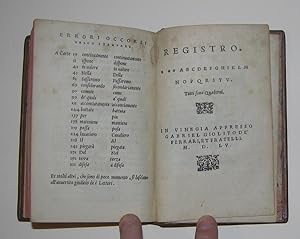
![Immagine del venditore per Orlando furioso. nouißimamente alla sua integrita ridotto and ornato di varie figure. Con alcune stanze del S. Aluigi Gonzaga in lode del medesimo. Aggiuntoui per ciascun Canto alcune allegorie, and nel fine una breue espositione et tauola di tutto quello che nell'opera si contiene. Venice, Gabriele Giolito de' Ferrari, 1546. [together with:] Dolce, Lodovico (1508-1568). L'Espositione di tutti i vocaboli, et luoghi difficili, che nel Libro si trouano; Con una brieue Dimostratione di molte comparationi and sentenze dell'Ariosto in diuersi auttori imitate. Raccolte da M. Lodouico Dolce. venduto da PrPh Books](https://pictures.abebooks.com/inventory/md/md30115156942.jpg)
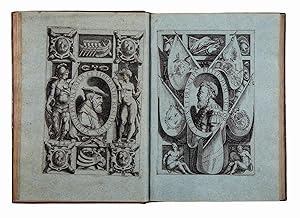
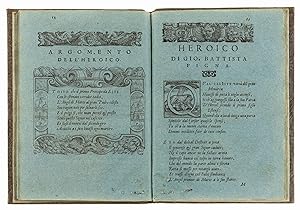

![Immagine del venditore per L'Enfer de Dante Alighieri. Avec Les Dessins de Gustave Dore. [Dante's Inferno]. venduto da Raptis Rare Books](https://pictures.abebooks.com/inventory/md/md31262055509.jpg)
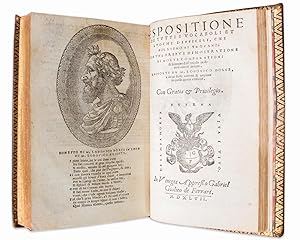
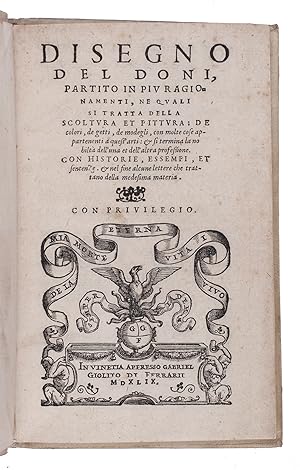
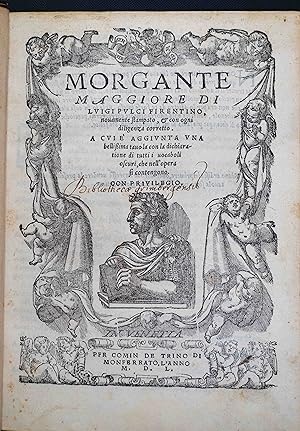
![Immagine del venditore per Tre libri di lettere [.] E i termini della lingua Toscana venduto da Govi Rare Books LLC](https://pictures.abebooks.com/inventory/md/md31463323697.jpg)
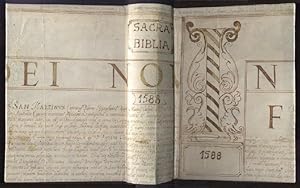
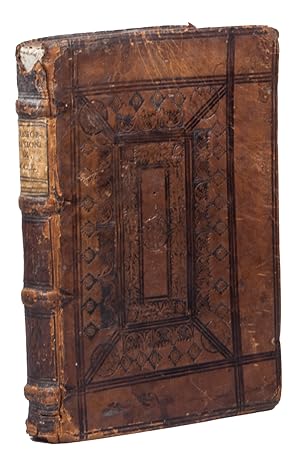
![Immagine del venditore per ORLANDO FURIOSO [and] I CINQVE CANTI venduto da Phillip J. Pirages Rare Books (ABAA)](https://pictures.abebooks.com/inventory/md/md31263840596.jpg)
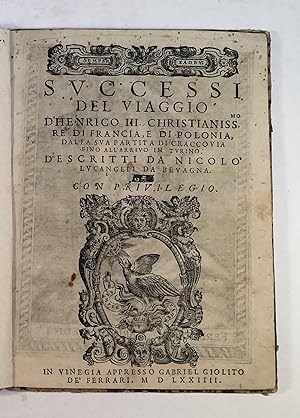
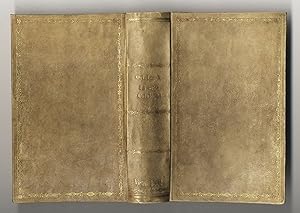
![Immagine del venditore per Trissino, Gian Giorgio (1478-1550). Di M. Giovangiorgio Trissino La Sophonisba. Li retratti. Epistola. Oracion al Serenissimo Principe di Vinegia. [Toscolano Maderno], Paganino and Alessandro Paganino, [ca. 1527-1529]. (bound with:) Dolce, Lodovico (1508- 1568). Thyeste tragedia di M. Lodouico Dolce, tratta da Seneca. Venice, Gabriele Giolito de Ferrari, September 1543. (bound with:) Idem. La Hecuba tragedia di M. Lodouico Dolce, tratta da Euripide. Venice, Gabriele Giolito de Ferrari, July 1543. (bound with:) Parabosco, Girolamo (1524-1557). La Progne tragedia noua di M. Girolamo Parabosco. Venice, Comin da Trino for Al segno della Cognizione , 1548. venduto da PrPh Books](https://pictures.abebooks.com/inventory/md/md31259078316.jpg)
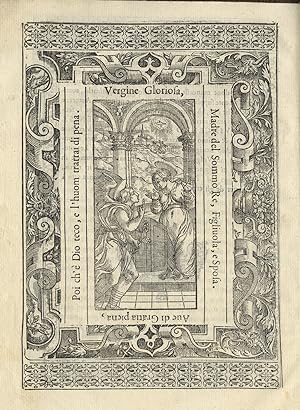
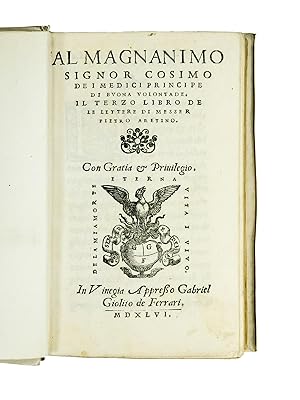
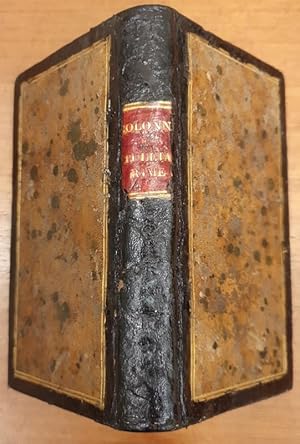
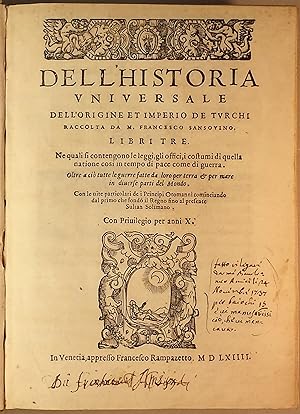
![Immagine del venditore per La libraria del Doni fiorentino. [together with] La seconda libraria del Doni venduto da Leopolis](https://pictures.abebooks.com/inventory/md/md31078225190.jpg)
